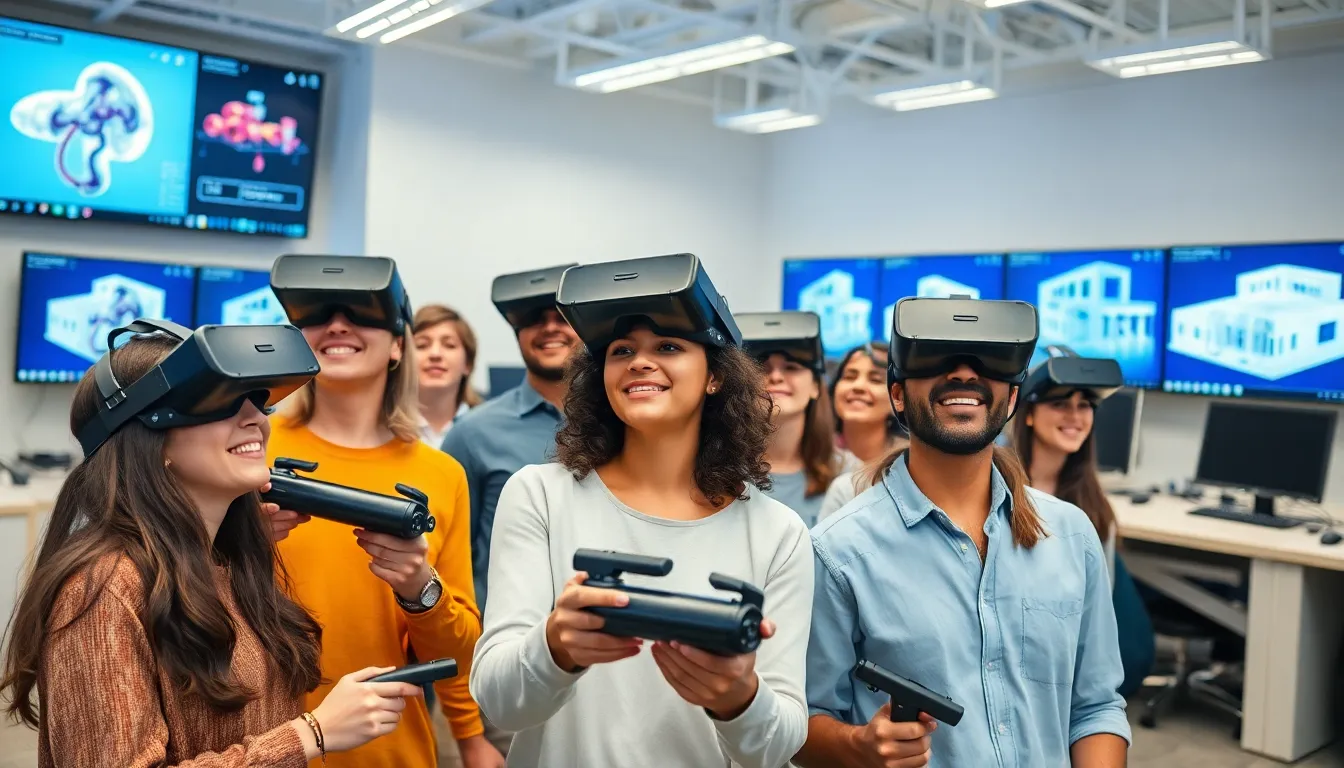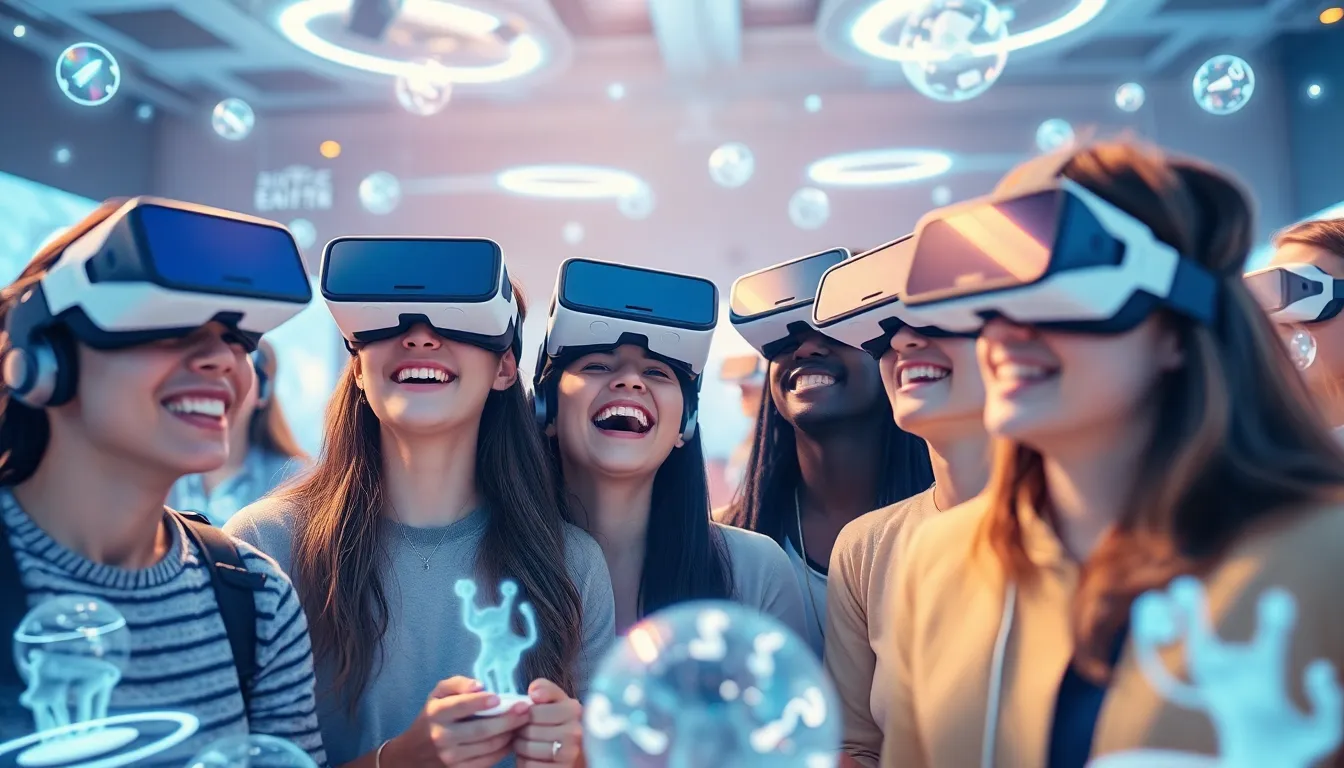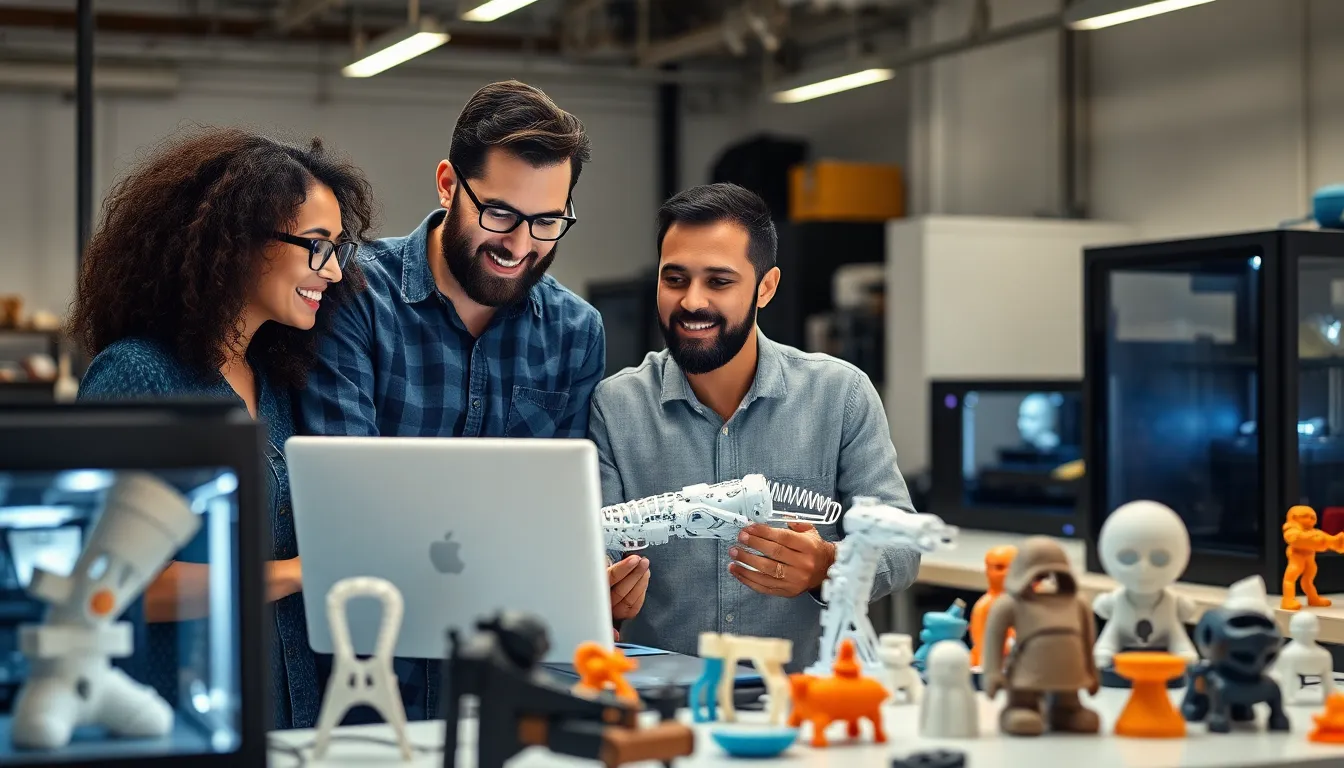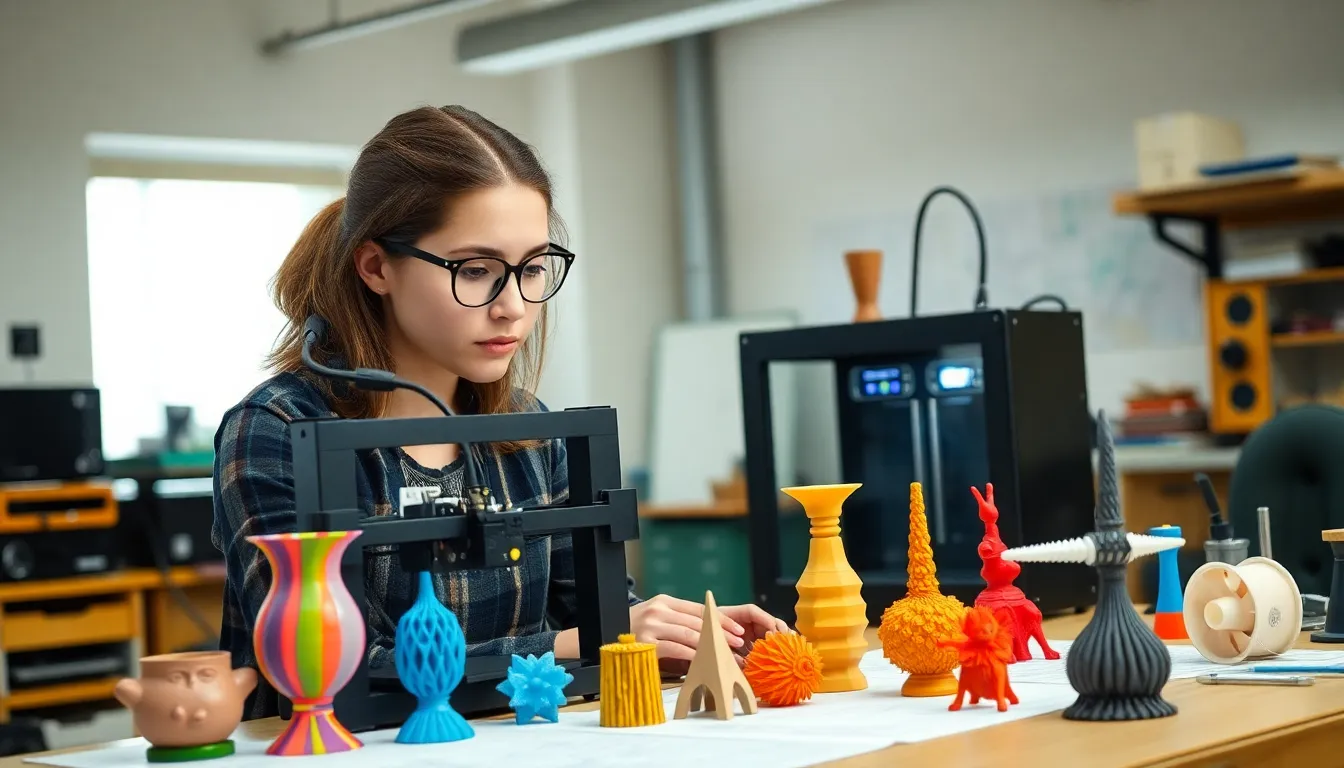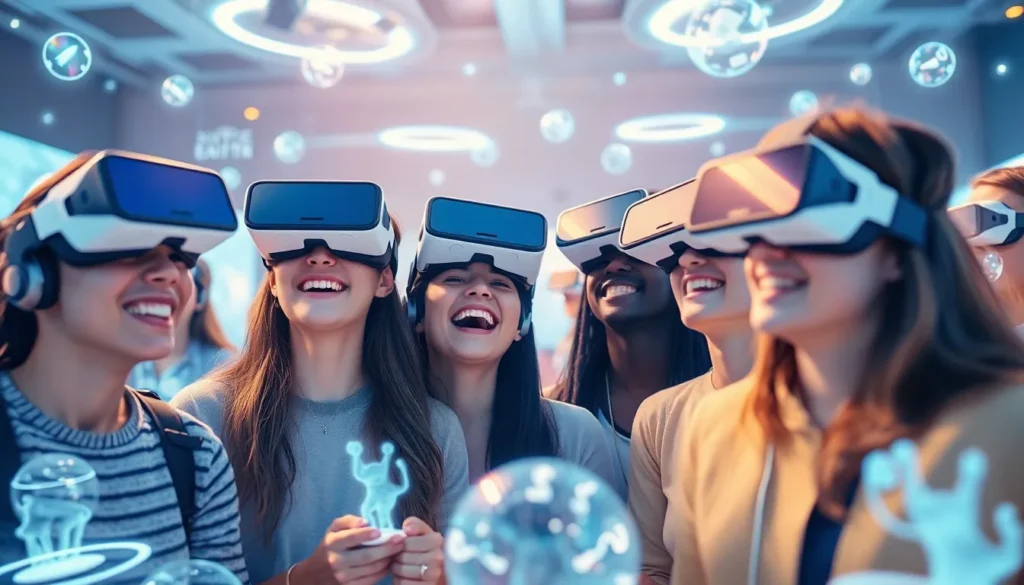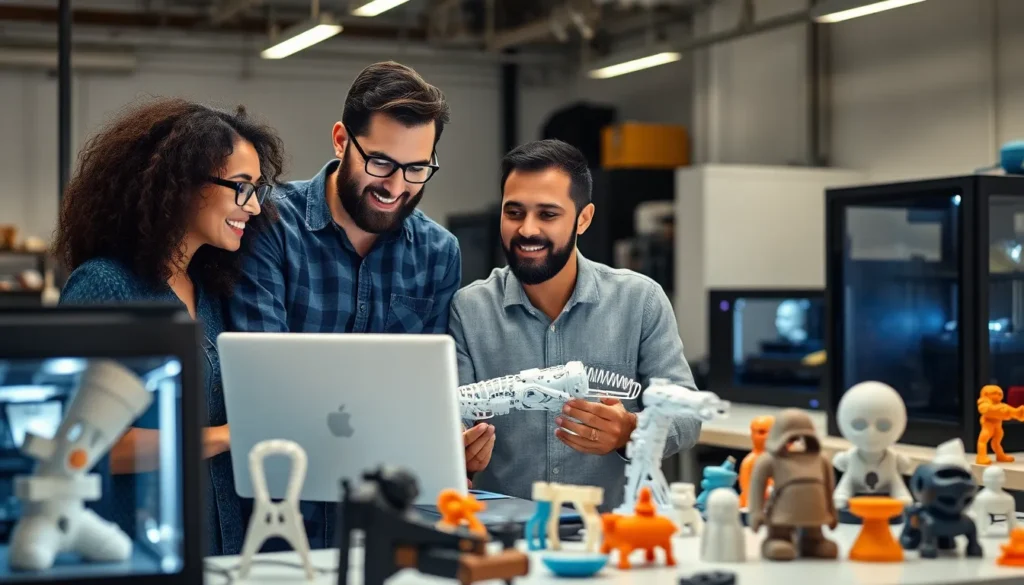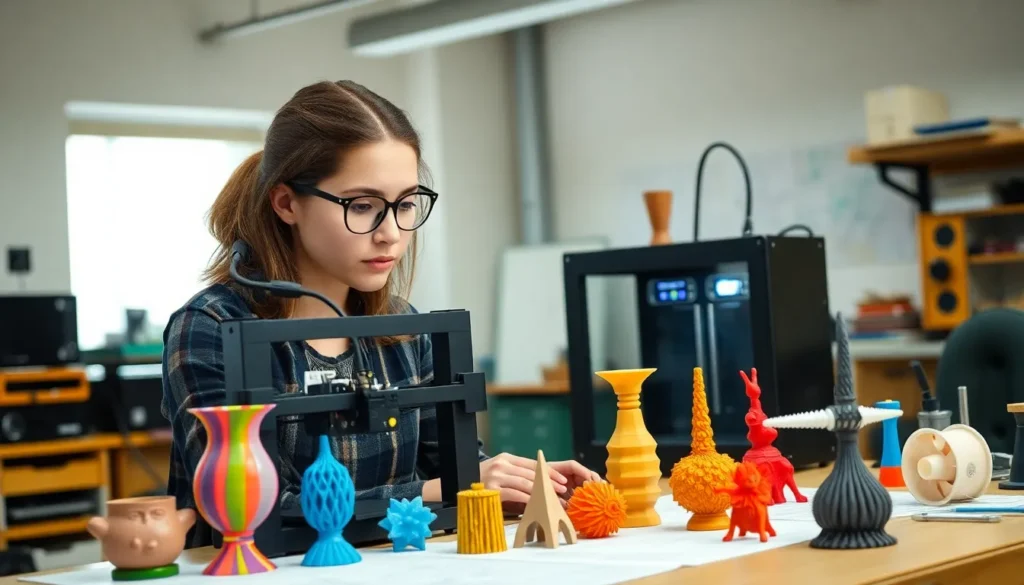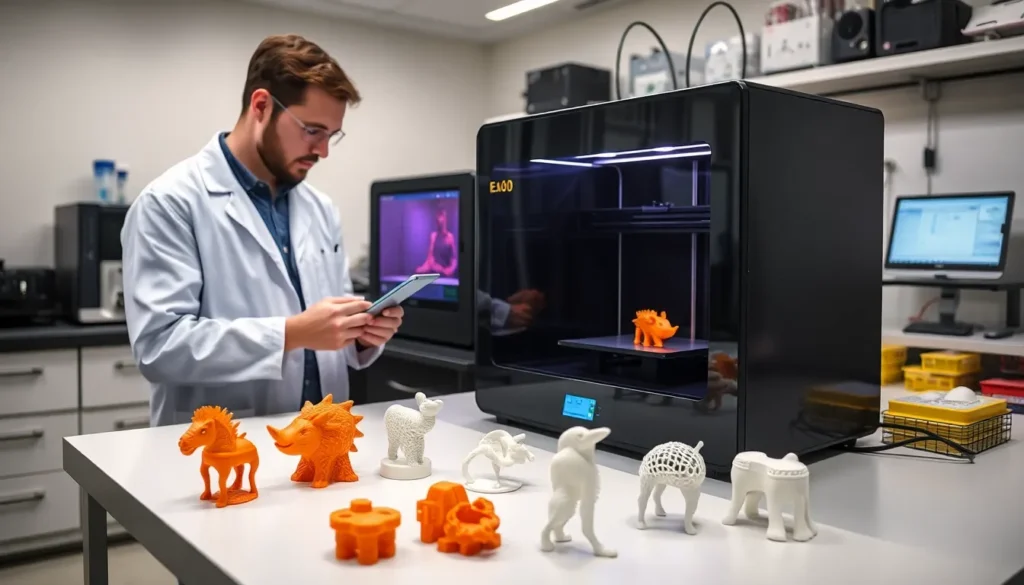Virtual reality labs are transforming the way people learn, create, and explore. By immersing users in lifelike environments, these innovative spaces offer unique opportunities for education and training across various fields. From medical simulations to architectural design, the applications of virtual reality are vast and growing rapidly.
As technology advances, virtual reality labs are becoming more accessible, allowing students and professionals alike to engage in hands-on experiences that were once unimaginable. They foster collaboration and creativity, breaking down traditional barriers to learning and experimentation. In this article, we’ll delve into the exciting world of virtual reality labs, exploring their benefits, applications, and the future they hold for various industries.
Table of Contents
ToggleOverview of Virtual Reality Labs
Virtual reality labs create immersive environments that revolutionize learning and training processes. These labs utilize advanced technology to simulate real-world scenarios, allowing users to engage in hands-on experiences that enhance understanding and skill acquisition.
Key Features of Virtual Reality Labs
- Immersive Technology: Virtual reality labs employ headsets, haptic feedback devices, and 3D simulations to provide realistic interactions.
- Collaborative Learning: Users can interact with peers and instructors in a shared virtual space, facilitating teamwork and communication skills.
- Multidisciplinary Applications: Fields such as medicine, engineering, and education benefit from tailored virtual experiences, improving discipline-specific competencies.
Benefits of Virtual Reality Labs
- Enhanced Engagement: Students and trainees show increased motivation and interest when participating in virtual experiences.
- Real-World Skill Development: Virtual environments allow for practice and coverage of high-stakes scenarios without real-world consequences.
- Flexibility and Accessibility: As technology advances, virtual reality labs become more affordable and accessible, increasing reach for diverse learners.
Future Potential
- Technological Advancements: Continuous improvements in hardware and software will expand the capabilities of virtual reality labs.
- Integration with Other Technologies: Combining virtual reality with artificial intelligence and data analytics can lead to highly personalized learning pathways.
- Expanded Use Cases: As industries adopt virtual reality, applications will likely broaden, paving the way for innovative training solutions.
Benefits of Virtual Reality Labs
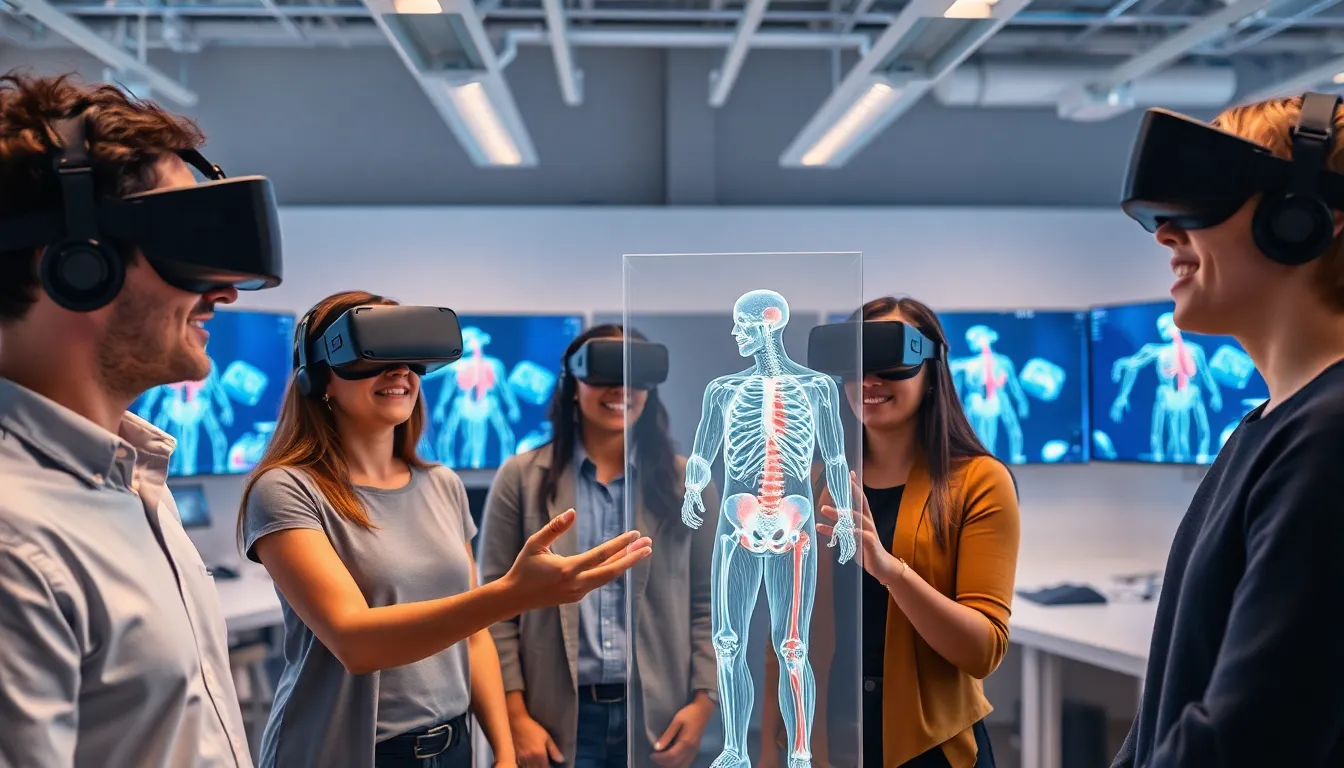
Virtual reality labs offer several significant advantages that enhance learning, collaboration, and skill development. These benefits create a compelling case for their adoption across various fields.
Enhanced Learning Experiences
Enhanced learning experiences occur through immersive environments that engage users deeply. Participants in virtual reality labs can explore complex concepts in an interactive manner, leading to improved retention rates. For instance, medical students practicing surgical techniques in a simulated setting develop better procedural skills than through traditional lectures. Studies indicate that immersive experiences can increase information retention by up to 75% compared to conventional methods. Additionally, users can manipulate 3D models, allowing for a hands-on approach that supports diverse learning styles.
Collaboration Opportunities
Collaboration opportunities flourish in virtual reality labs due to their shared environments. Multiple users can interact in real-time, regardless of geographic location. For example, architecture students can design a building together within a virtual space while visualizing their ideas and providing instant feedback. Studies show that collaborative virtual environments can enhance teamwork and communication skills, essential in various professions. This interactive format not only encourages knowledge sharing but also helps develop critical problem-solving abilities among participants.
Key Technologies in Virtual Reality Labs
Virtual reality labs rely on advanced technologies that enhance immersive experiences, facilitate collaboration, and provide powerful tools for education and training. Key technologies include hardware components and software solutions essential for creating a seamless virtual environment.
Hardware Components
- Head-Mounted Displays (HMDs): HMDs like the Oculus Rift, HTC Vive, and Valve Index deliver high-resolution visuals, making virtual environments appear life-like. These devices offer 110 degrees or wider field of view for greater immersion.
- Motion Controllers: Motion controllers allow users to interact within virtual spaces. Devices such as the Oculus Touch or Vive controllers enable precise navigation through gestures, enhancing user engagement and interactivity.
- Tracking Systems: Tracking systems, including external cameras and internal sensors, detect user movements. Technologies like optical tracking and inertial sensors maintain positional accuracy with sub-millimeter precision.
- Computers and Consoles: High-performance computers or gaming consoles power virtual reality experiences. Components like graphics processing units (GPUs) ensure smooth performance, reducing latency and maintaining frame rates above 90 frames per second.
- Input Devices: Input devices such as gloves and treadmills enhance interaction and user experience. For example, haptic gloves offer tactile feedback, making virtual objects feel more realistic.
Software Solutions
- Simulation Software: Simulation software creates realistic scenarios for training and education. Programs like Unity and Unreal Engine provide tools to develop detailed 3D environments for various applications.
- Collaboration Platforms: Collaboration software enables real-time interaction among multiple users. Solutions such as Spatial and VRChat foster teamwork and communication, encouraging shared experiences.
- Learning Management Systems (LMS): LMS tailored for virtual reality tracks user progress and delivers educational content. These platforms often integrate with existing systems to streamline management and reporting.
- Analytics Tools: Analytics tools collect data on user interactions within virtual environments. These tools help educators and trainers assess engagement levels and learning outcomes, enabling informed adjustments to programs.
- Content Creation Tools: Content creation tools facilitate the design of interactive and immersive experiences. Applications like Mindshow and Tilt Brush allow creators to develop virtual artworks and scenarios without requiring extensive programming knowledge.
Applications of Virtual Reality Labs
Virtual reality labs serve various applications across multiple fields, offering immersive experiences that enhance learning, training, and therapeutic outcomes. The following subsections detail these key applications.
Education and Training
Education and training benefit immensely from virtual reality labs. They provide immersive learning experiences that boost student engagement and comprehension. Users interact with simulations, allowing them to practice skills in a risk-free environment. For example, engineering students can explore complex machinery or architectural designs, gaining insights that traditional methods can’t offer. Research shows that students using VR for training demonstrate a 75% improvement in retention compared to conventional lectures. Incorporating VR into curricula also cultivates collaboration among students, fostering teamwork skills essential for their future careers.
Healthcare and Therapy
Healthcare and therapy make substantial use of virtual reality labs for training and treatment. Medical professionals engage in realistic simulations, enhancing their surgical and diagnostic skills. VR environments allow doctors to practice procedures repeatedly, reducing risks during real surgeries. In therapy, patients benefit from exposure therapy to confront phobias and anxiety disorders in controlled settings. Studies indicate that VR interventions can reduce anxiety symptoms in patients by up to 60%. Additionally, VR aids in physical rehabilitation by creating motivational and interactive exercises, improving patient outcomes significantly.
Challenges in Implementing Virtual Reality Labs
Virtual reality labs face several challenges that can hinder their successful implementation and operation. These challenges primarily encompass cost considerations and technical limitations.
Cost Considerations
High initial investment in hardware and software represents a significant barrier for many institutions. Costs for quality head-mounted displays (HMDs), motion controllers, tracking systems, and high-performance computers can reach tens of thousands of dollars. Ongoing expenses, such as software licensing fees and maintenance, also contribute to the financial burden. Training staff to effectively use and manage virtual reality labs further adds to costs. Budget constraints often limit the ability of schools and organizations to adopt this technology, despite its potential benefits.
Technical Limitations
Technical limitations can impede the effectiveness of virtual reality labs. Compatibility issues may arise between various hardware components and software applications, leading to integration challenges. Additionally, some users may experience discomfort, such as motion sickness, which can reduce engagement and hinder learning experiences. System requirements for high-quality VR experiences often necessitate frequent upgrades, posing ongoing operational challenges. Furthermore, infrastructure, such as adequate space and reliable internet connectivity, is crucial for optimal functionality but might not be available in all settings.
Virtual reality labs represent a significant leap forward in educational and training methodologies. They offer immersive experiences that not only enhance engagement but also improve skill retention and collaboration among learners. As technology continues to evolve, these labs are set to become even more integral to various fields, from medicine to engineering.
Despite the challenges associated with costs and technical limitations, the benefits of virtual reality labs far outweigh the obstacles. The future holds exciting possibilities as advancements in technology pave the way for broader applications and accessibility. Embracing this innovative approach can transform how individuals learn and work, making virtual reality labs a vital component of modern education and training.

